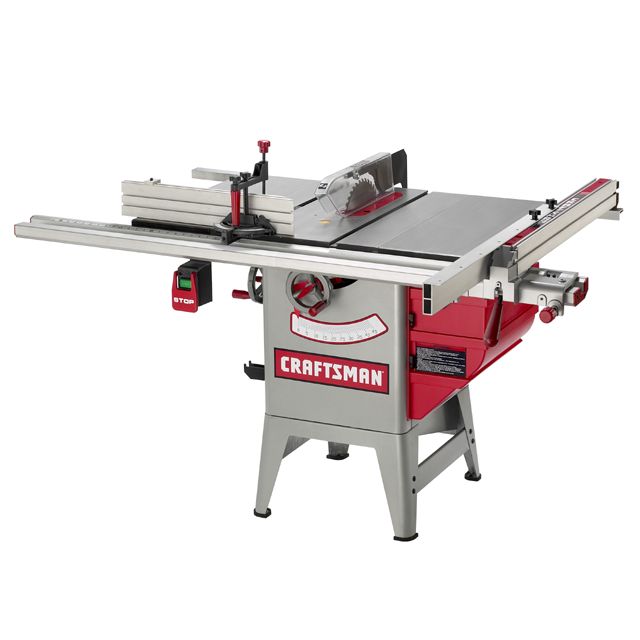Loading ...
Loading ...
Loading ...

Whencross-cuttinga numberof piecesto thesame
length,a blockofwoodcanbeclampedtothe fence
andusedasacut-offgaugeasshown.Itis important
thatthisblockofwoodalwaysbepositionedinfrontof
thesawbladeasshown.Oncethecut-offlengthis
determined,securethefenceandusethemitergauge
to feedtheworkintotheblade.Thisblockof wood
allowsthecut-offpieceto movefreelyalongthetable
surfacewithoutbindingbetweenthefenceandthe saw
table,therebylesseningthepossibilityof kickbackand
injuryto theoperator.
Note:Thisblockallowsthecut-offscrappieceto move
freelyalongthetablesurfacewithoutbindingbetween
thefenceandtheblade,therebylesseningthepossibil-
ityof kickbackandinjuryto theoperator.
,
Once the cut-off length is determined, lock the
fence and slide the workpiece across the table
surface until it contacts the block. Use the miter
gauge (K) to feed the workpiece into the blade.
To avoid kickback when using the block (F) as a cut-off
gauge, it is very important that the rear end of the block
(G) be positioned so the workpiece (H) is clear of the
block before it enters the blade (I). Never use the fence
(J) as a cut-off gauge when crosscutting. See
figure 29-3.
RIPPING
• NEVER stand in the line of the saw blade path when
ripping.
• ALWAYS keep hands and fingers away from the saw
blade.
Figure 30-1
B
and make solid contact with the saw table. The blade
guard (B) and splitter assembly (C) must be used. The
splitter has anti-kickback fingers (D) to prevent the
workpiece from kicking back, and the splitter assembly
to prevent the wood kerf from closing and binding on
the blade. See figure 30-1.
1. With the workpiece clear of the saw blade, start the
motor.
,
,
Place the workpiece on the saw table with the
straight edge against the fence.
Advance the workpiece slowly, holding it down and
against the fence, then into the saw blade.
Note: The workpiece can be fed through the saw blade
with one or two hands depending on the size.
,
,
After the workpiece is beyond the saw blade and
anti-kickback fingers, you can remove your hand
from the workpiece. When this is done, the work-
piece will either stay on the table, tilt up slightly and
be caught by the rear end of the guard, or slide off
the table to the floor. Alternately, the feed can con-
tinue to the end of the table, after which the work-
piece is lifted and brought back along the outside
edge of the fence.
The cut-off part of the workpiece remains on the
table and is not touched until the saw blade has
come to a complete stop.
CAUTION
When ripping a workpiece longer than three feet, it is
recommended that the workpiece be supported at the
rear of the table saw to keep it from falling. A roller
stand can be purchased to support long workpieces to
the rear of a table saw.
CAUTION
If the workpiece is to be cut less than 4-inches wide, a
push stick (E) or guide should always be used to keep
your hands away from the saw blade. See figure 30-2.
Figure 30-2
E
A
C D
Ripping is the operation of making a cut with the grain
of the workpiece; the rip fence (A) is used to position
and guide the workpiece. Since the workpiece is
pushed along the fence, it must have a straight edge
\
An accessory Craftsman Fence Guide can be purchased
to assist when making narrow cuts. See "ACCESSOR-
IES AND ATTACHMENTS" section in this manual.
36
Loading ...
Loading ...
Loading ...
